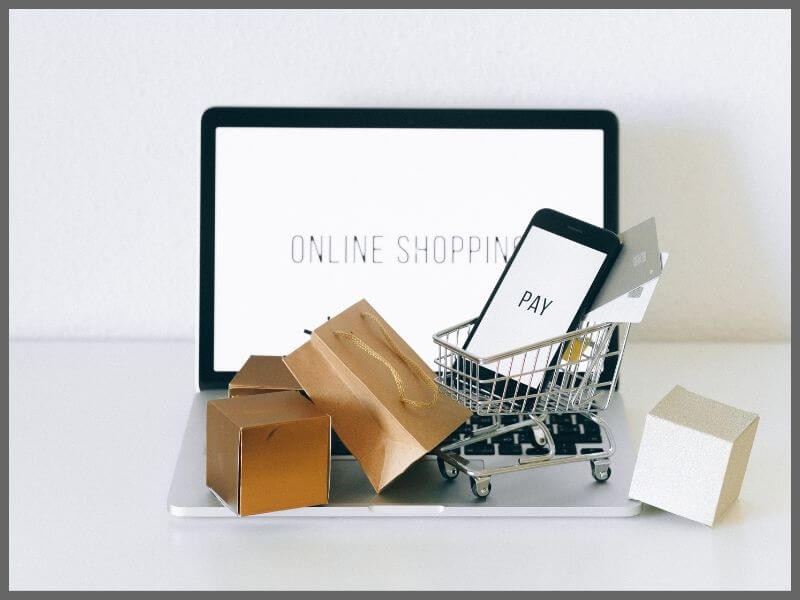
E-commerce has skyrocketed, transforming the online market into a place with endless possibilities. It seems that traditional shopping barriers have dissolved in the blink of an eye, giving rise to a borderless retail landscape. But what it takes to be successful in the online market.
We can buy almost whatever we want, wherever we want, whenever we want.
This shift to online has opened opportunities for seasoned merchants and beginner entrepreneurs alike, and all have the chance to capitalise.
Mastering sales techniques doesn't just give you an advantage—it's necessary.
As online markets become more saturated every day, the ability to capture and maintain customer interest becomes of utmost importance.
Even though everyone has (equal) chance, you must understand sales techniques to succeed in online sales.
The first step in e-commerce success is knowing what consumers want.
Researching consumer trends involves analysing data to identify popular products and emerging categories.
Tools like Google Trends, industry reports, and social media listening can provide invaluable insights. For example, during the pandemic, there was a surge in demand for home fitness equipment and wellness products.
By staying attuned to these shifts, you can align your product offerings with current market desires. You must also know who you are selling to and your target audience.
Make buyer personas as detailed as you can. They should include your potential customer's demographic information, interests, and purchasing behaviour. Are you targeting tech-savvy millennials, eco-conscious consumers, or busy parents?
Knowing who you're selling to allows you to tailor your marketing messages and product offers to meet their needs and preferences. For instance, if your audience values sustainability, emphasise your eco-friendly practices.
Analysis of your competition helps you understand what works and what doesn't in your niche. Examine top competitors' websites, product ranges, pricing strategies, and customer reviews. What are their strengths? Where do they fall short?
Use this information to find your unique selling proposition (USP) and carve out a niche where you can outperform. For example, if competitors offer fast shipping, you might focus on exceptional customer service or superior product quality to differentiate your brand.

For your online store to be successful, select the right e-commerce platform.
Platforms like Shopify and WooCommerce each offer unique features and benefits.
Shopify is renowned for its ease of use and extensive app network, making it ideal for beginners. WooCommerce, on the other hand, offers excellent customisation as it is on the WordPress platform.
When choosing a platform, consider your technical skills, budget, and specific business needs. You must know how to manage your website, at least in some minimal quantity, to set the foundation for a smooth and scalable online operation. For all the rest, make sure you find a capable developer.
An engaging user experience (UX) is essential if you want to keep visitors on your site and guide them towards making a purchase.
Your website must be visually sound, easy to navigate, and mobile-friendly. Use high-quality images, clear calls to action, and a logical site structure.
For example, a clean, uncluttered design with intuitive navigation menus can significantly enhance the user journey. Interactive elements like live chat can also improve engagement and assist in real-time customer queries.
A seamless checkout process is necessary to reduce cart abandonment rates.
Simplify the checkout proces, minimalistic form fields, and offer multiple payment options.
Ensure your checkout page is secure and clearly communicate this to customers. To build trust, display security badges and offer trusted payment gateways like PayPal and Stripe.
The goal is to make the buying process as smooth and quick as possible, to convert people who are only browsing into proper buyers.
Product descriptions are more than just a feature on your website; they're an opportunity to tell a story and connect with your audience.
Use persuasive and engaging language that highlights the benefits of your product.
For example, instead of simply stating "water-resistant," paint a picture: "Enjoy your adventures worry-free, even in the rain, with our durable, water-resistant gear."
Focus on how the product or service can help improve customer's life, addressing their pain points and aspirations.
Besides that, you have to also show, not just tell.
Visual content is the mainstay of e-commerce. Quality images and videos can make your products come alive, showing their features and uses in detail.
Provide multiple images from different angles, include close-ups for intricate details, and use lifestyle photos to help people envision the product in their own lives.
Videos demonstrating the product in action can be particularly effective. For example, a video showing a blender's various functions can convey its versatility and ease of use better than text alone.
You also need to build trust and credibility, and the best way to do that is through your customers' reviews.
Encourage customers (the satisfied ones) to leave reviews and display them on your product pages.
Positive reviews and ratings can reassure potential buyers of your product's quality and reliability.
What if the feedback is negative?
Address it professionally and constructively to demonstrate your commitment to customer satisfaction.

Now that you have an online store with great pictures, videos, and descriptions functioning perfectly, it has to attract customers.
Search Engine Optimisation (SEO) is the most simple (and cheapest) way to do so. It drives organic traffic to your e-commerce store.
Optimise your website's content with relevant keywords, meta descriptions, and image alt tags. Your website has to be mobile-friendly and have fast load times.
For example, if you sell handmade candles, use keywords like "organic soy candles" or "handcrafted scented candles" to improve your search rankings.
For your business to succeed, it's important to have a proper website, i.e., an online store, and to engage, entertain, and sell through all available channels.
By this, we mean social media platforms, as they are invaluable sources for marketing your e-commerce products.
Create content that entertains and informs (and, ultimately, sells). Use a mix of posts, stories, and live videos to interact with your audience. Consistent and authentic engagement builds brand loyalty and increases sales.
If using all available channels, you must include email marketing campaigns in your strategy.
Email marketing is and remains one of the most effective tools for e-commerce.
Build a subscriber list by offering incentives like discounts or free goods. Send personalised emails to engage with your audience, promote new products, and offer exclusive deals.
Segment your customers and tailor your messages based on their behaviour. For example, send a special offer to customers who haven't purchased in a while or recommend products based on previous purchases. Effective email campaigns can turn subscribers into loyal, repeat customers.
Setting all up is not where your job ends, but better yet – it's just a beginning.
There are some things you'll have to keep optimising and under surveillance to achieve conversions.
A/B testing, or split testing, helps determine which parts of your website or marketing campaigns are most effective.
You can test various headlines, images, call-to-action buttons, and layouts to see what resonates best with your audience.
For example, you might test two different product page designs to see which results in higher conversion rates.
For your online business, you must understand your consumers' behaviour.
Tools like Google Analytics can inform visitors about your site's interaction.
You can track traffic sources, bounce rates, and conversion paths to understand how people behave on your website.
If you notice a high bounce rate on a particular product page, it may indicate a need for better images or more compelling descriptions.
Don't miss increasing your average order value. What do we mean by that?
Use upselling and cross-selling.
During the purchase process, recommend higher-end versions of the product (upselling) or related products (cross-selling).
For example, suggest accessories like a laptop bag or an extended warranty if someone buys a laptop.

Don't forget the most important thing – yes, you have created your web shop, online store, and e-commerce to sell. Still, your priority must be stellar customer service and happy customers.
Also, build a reliable support system on your website that includes live chat, email support, or comprehensive FAQs.
Addressing customer inquiries and issues promptly fosters trust and loyalty. Offering 24/7 live chat support can provide instant assistance, enhancing the customer experience and increasing the likelihood of repeat business.
Optimising sales processes, providing stellar customer service, and continuously scaling your business are essential for long-term success.
The digital marketplace is full of potential. If you want to build a thriving e-commerce business. Just make sure you learn from each experience and contact us if you need any help.